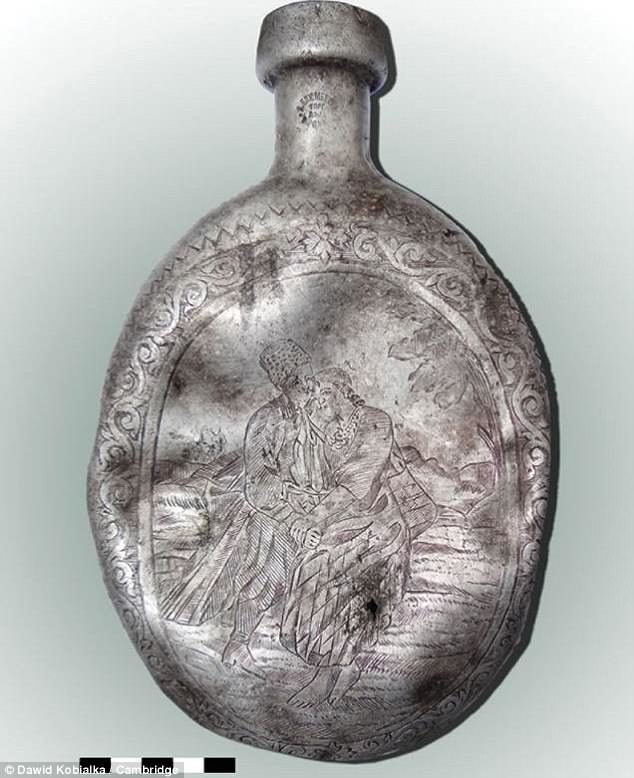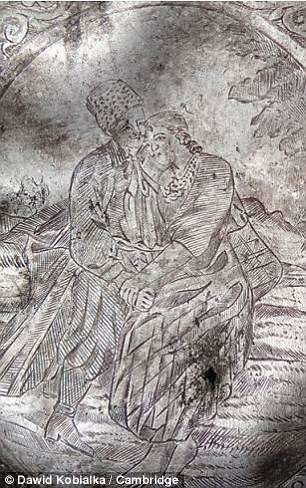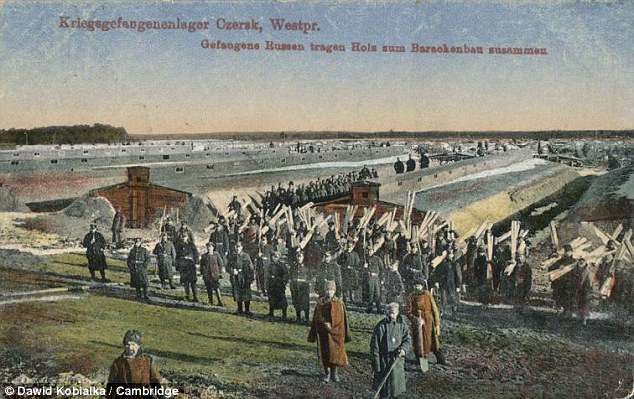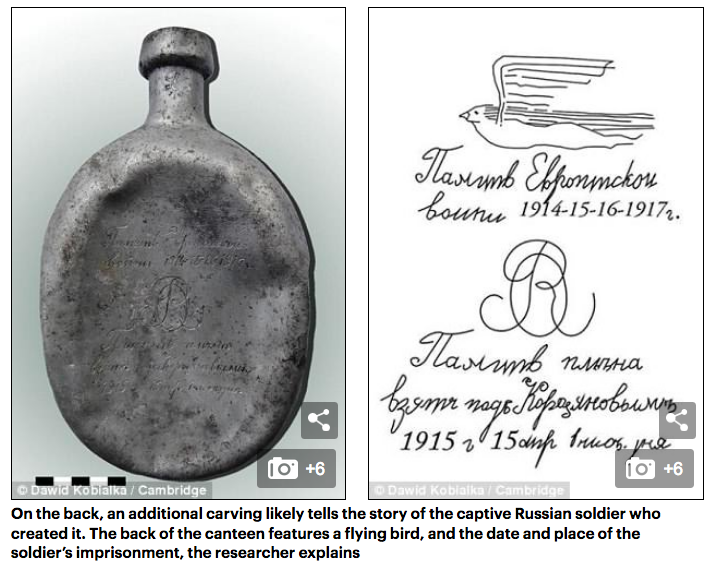
Etched into a canteen found at the site of the World War I prisoner-of-war camp in Czersk is a detailed scene of a man and woman caught in a loving embrace.
It comes in stark contrast to the gruesome first-hand accounts of life at the POW camp, where hunger, forced labor, and infectious disease were widespread.
Experts say so-called trench art like this often captured life's sentimental moments even in the midst of hardship, reflecting the 'personal stories, feelings, and fears' of soldiers during war.

Though it may have been carved into a standard issue soldiers' canteen, it's no crude drawing; according to the expert, the details show several different carving techniques were employed to create the romantic scene in aluminium.
'The man has big and detailed eyes; the moustache is small but evidently cultivated,' the author notes.
'The woman is huddled close to the man. She also is wearing expensive clothing and beautiful robes comprised of several different elements.
'Her neck is decorated with three rows of large beads. She has thick, long hair and, in contrast to her lover, she is barefoot. The pair form the central part of the scene.'
On the back, an additional carving likely tells the story of the captive Russian soldier who created it. The back of the canteen features a flying bird, along with the date (the latest being 1917) and place of the soldier's imprisonment, the researcher explains.
And, the letters 'O' and 'R' are carved prominently into the rear-center - likely the initials of the canteen's owner.
According to Kobiałka, these details suggest the scene depicted on the front might not just be any idealized lovers.
Instead, it could be 'the owner of the artefact and his sweetheart.'
'Many studies indicate how POWs idealized and sentimentalized their lives before imprisonment,' the author notes.
The remarkable discovery raises many questions about the unknown artist - or artists.
Differences in the carving techniques seen on the front and back of the canteen suggest the bird image may have been added earlier or later by a different soldier.
Regardless, the expert says the carvings would have taken many hours to create.
'Each incised line can be seen as representing a deep longing for the beloved person,' Kobiałka says.
Life for those detained in Czersk was by no means easy, and trench art may have given soldiers an outlet to express their hopes and fears.

And, many never made it out alive.
'The most evocative and distressing remnants of this dark heritage is the associated POW cemetery,' according to Kobiałka.
'This could be considered a cultural and natural forest: a forest of concrete crosses that mark mass graves, between which have grown pines and birches.
'Due to brutal treatment by the guards, insufficient rations, infectious diseases and forced labor, thousands of prisoners never left the camp.'
It was eventually shut down a few weeks after Armistice Day (November 11, 1918) - but, the fate of the canteen artist remains unknown.
WHAT IS TRENCH ART?
The term 'trench art' has largely come to be associated with World War I, though its history extends long before and after this era.
It does not have to come literally from the trenches; instead, it's any item created by soldiers or civilians during and associated with armed conflict.
In one remarkable example found Poland in 2006, a WWI prisoner-of-war had etched a scene of two lovers embracing into a metal canteen.
'Trench art can be considered as a material manifestation and expression of human love, emotions and feelings, of enduring relationships, and of certain events' during the war, Dawid Kobiałka explains in a paper about the discovery.




Reader Comments